Real success in a business always starts with a good plan. Creating and mapping a strategic sales plan is essential to achieving sales and marketing goals. Looking at the sales target in detail, Sales planning skills can be defined by defining the target, evaluating the current performance or sales of a particular product in the target market, determining the strategies to reach this target, and identifying the available resources to achieve the targets. Sometimes, these skills may include assigning roles and responsibilities to different sales representatives.
Table of Contents
What Is Sales Planning?

A sales plan is a strategic document developed to identify and plan sales strategies. The plan usually lays the groundwork for other metrics to measure revenue growth or sales success and growth. It is specifically designed to assist the marketer in sales. It also provides an insight into where we are now and the goals set. Perhaps more importantly, it shows how to get to the goal.
A sales plan differs from a marketing plan because it uses more direct and purposeful approaches. While marketing plans are designed to help the business identify its goal and create strategies to achieve them, a sales plan highlights in detail the strategies businesses need to sell products and services and thus increase revenue. It consists of sections that describe customer characteristics, tools, metrics, required strategies, and estimated costs.
Sales Plan and Strategy Templates
Sales Plan Templates are pre-designed formats used by businesses and sales professionals to outline their sales strategies, objectives, and action steps to achieve their revenue targets. These templates provide a structured framework for documenting key aspects of the sales process, including target market analysis, sales goals, sales tactics, budget allocation, and performance measurement. Sales Plan Templates ensure consistency, organization, and alignment of sales efforts, helping businesses effectively plan, execute, and evaluate their sales initiatives.
Sales Plan Templates assist businesses in strategizing, organizing, and executing their sales initiatives. By using these templates, organizations can ensure consistency, alignment with business objectives, and a systematic approach to sales activities. Sales Plan Templates help in identifying target markets, setting clear sales goals, developing effective strategies, allocating resources, and measuring performance. These templates are valuable tools for sales teams, sales managers, and business owners, facilitating strategic decision-making, sales forecasting, resource allocation, and performance evaluation
Types of Sales Planning
The rule of thumb is to create a strategic sales plan for the entire organization with everything we mentioned above. But companies use many different sales plans to streamline their operations. These-
Strategic Sales Plan
It is a strategic periodic sales plan that consists of the company’s sales targets, target market, sales strategies, sales tools, and sales budget. It strategically outlines what needs to be done to increase sales, when it needs to be done, who needs to do it, and what needs to be done to measure it.
Regional Sales Plan
A regional sales plan is a variational subset of a strategic sales plan created for use in a specific region or market segment.
Tactical Sales Plan
The tactical sales plan is a subset of the strategic sales plan developed by teams within the organization to streamline their operations. It includes more detailed team-specific strategies and tactics aligned with overall corporate sales strategies and objectives.
Unexpected Sales Plan
An emergency sales plan specifies how the organization will conduct sales-related activities in times of unforeseen events such as sudden loss of key personnel, changes in government policies, and game-changing offers by a new competitor(s).
The Benefits of Sales Planning
Creating a sales plan has many marketing benefits, some of which are:
- The sales plan defines a sales target set for the business and determines the appropriate sales strategies for the target market.
- A sales plan defines the sales tactics of a sales team.
- A sales plan activates, motivates, and focuses a sales team.
- It provides the budgeting and clarification of the steps to be taken to reach the targets.
- The sales plan helps to review targets and improve sales approaches periodically.
While companies are preparing a sales plan, they need to make the right choices among all market targets, and it is a complex process. While doing this, they can make better decisions and create a successful sales plan by using SWOT analysis.
How to Create a Sales Plan
A sales plan is a tool used by any small business. It is probable that other types of businesses, such as large corporations, also use a sales plan.
Executive Summary and Scope of the Sales Plan
This section summarizes the business objectives and strategies to achieve them. It provides an overview of the document’s content and specifies the period for which the document’s content is valid. The executive summary is a concise and standardized way of introducing the essential details of the business to potential investors. It should define what the problems are and the needs in the market to highlight how problems can be solved uniquely. An executive summary should include:
It should inform people unfamiliar with the type of product being produced about what the business is doing, and its potential to succeed.
Marketing, management, and financial strategies must be found. It should also be able to show forward projections of the business. In general, it should touch on the whole of the information provided in the sales plan.
This part of the sales plan is important to be short and directly informative. Representations of target points, graphs, or other visual representations can be used to achieve this.
Business, Product, and Revenue Targets Must Be Defined
This section follows the executive summary, clearly highlighting the business’s goals and revenue targets. It should also include business objectives that will optimize lifecycle value. Essentially, it should detail all the information provided in the executive summary.
An ideal sales plan should include more information about the company and what it sells. In general, the following information should be available.
Brief information on how and when the business was established, its location, and form (partnership, LTD, LLC, or owner)
The value that the product or service provides to its consumers should be emphasized. In short, it should describe the benefits that the product provides to its target audience.
Business goals and revenue goals should be detailed. It is important to determine the short- and long-term goals and the expense incurred at each milestone.
Evaluation of Prior Period Performance
This section analyzes the performance of the business or a previous period in the previously developed sales plan. This is done to identify errors and decisive actions that help achieve positive results. It also helps predict the consequences of applying an approach. This section is generally included only to describe and adapt techniques and actions that work to optimize future sales plans.
Market and Industry Conditions
This section summarizes circumstances such as government policies and brand biases that may directly or indirectly affect sales policies. It also identifies other major players in the industry and the company’s position relative to them. This gives an idea of what the company would do differently. It also gives an idea of how competitors can take advantage of their weaknesses.
When analyzing the industry and competitors, the following points should be considered:
- The market position should be clearly stated, and the certainty of the product or service should be documented.
- The growth of the business should be reflected by examining market trends and consumer desires.
- It also needs to consider the geographic boundaries of the market.
Strategies and Methodologies to be Applied
This section is perhaps the most important part of the sales plan and should be written in very clear language. This section is designed to suggest proven sales techniques, communication sequences, and marketing tactics to be applied. To get a feel for these proven methodologies, there must be an understanding of competitors in the same niche. The following steps will help identify strategies and methodologies.
A pricing strategy should be established and adhered to. The price for the products should be determined by researching similar products and services.
The advertising medium should be clearly defined, and it should be decided when to use websites, television advertising, magazine publications, and posters.
It is very important to identify sales strategies that have proven effective in the past.
The sales team’s approaches to make short and long-term leads and close deals should be specified.
Potential Demographic Information
This section contains information about renewals, referrals, sales, and new expectations in the market. More precisely, potential demographics should be identified, i.e., to whom the product is being sold, the social status of potential customers, and how many of these customers are in the market should be outlined. For example, if a company sells bottles, breastfeeding mothers would be target demographic information. It also indicates all potential revenue generated and opportunities the business can take advantage of.
Team Capabilities and Resources
This section examines the abilities, strengths, and weaknesses of team members. It highlights the current status of all production inputs, including human resources, salesforce, assets, and transportation needed to close sales deals.
Action Plans for Individuals and Teams
In this part of a sales plan, tasks, activities, and assignments are assigned to individuals and teams. Tasks can be divided into product presentations, trade show demonstrations, meetings, and appointments.
Performance Monitoring
This section is prepared to set benchmarks and metrics to achieve performance and progress in performance. It also includes systems and processes for monitoring said metrics. A sales plan is not optional for a business that wants to see continued growth. Apart from its obvious benefits, it encourages hard work and a discipline for individuals and team members. A documented sales plan helps implement the best ideas, thoughtful goals, plans, and strategies. Essentially, it is an unwritten plan, just followed.
Conclusion
Briefly, a sales plan defines your sales goals, methodology, audience, and potential barriers. Creating a sales plan takes time. But once your sales plan is created, your job gets easier. You can move forward by updating the current plan as needed.
FAQs
How do you write a sales plan and strategy?
When writing a sales plan, include goals, target market research, competitive analysis, sales & marketing strategies, and projections. Outline resources, activities, timelines, and how you’ll measure success. Align with wider business objectives.
How do you write a sales strategy plan template?
A sales strategy plan template should include sections for goals, target audience, competitor assessment, positioning, messaging, sales channels, required resources, and KPIs to track. Use templates to maintain consistent structure.
What are the 7 steps to creating a sales plan?
The 7 key steps to creating a sales plan are:
- Set sales goals
- Identify target customers
- Research the market
- Analyze competitors
- Develop sales strategies
- Plan sales activities
- Define metrics and KPIs
What are the 4 types of sales strategies?
The 4 main types of sales strategies are:
- Market penetration – Selling more to existing customers
- Market expansion – Attracting new customer segments
- Product development – Improving products or new releases
- Diversification – Adding new product lines or markets



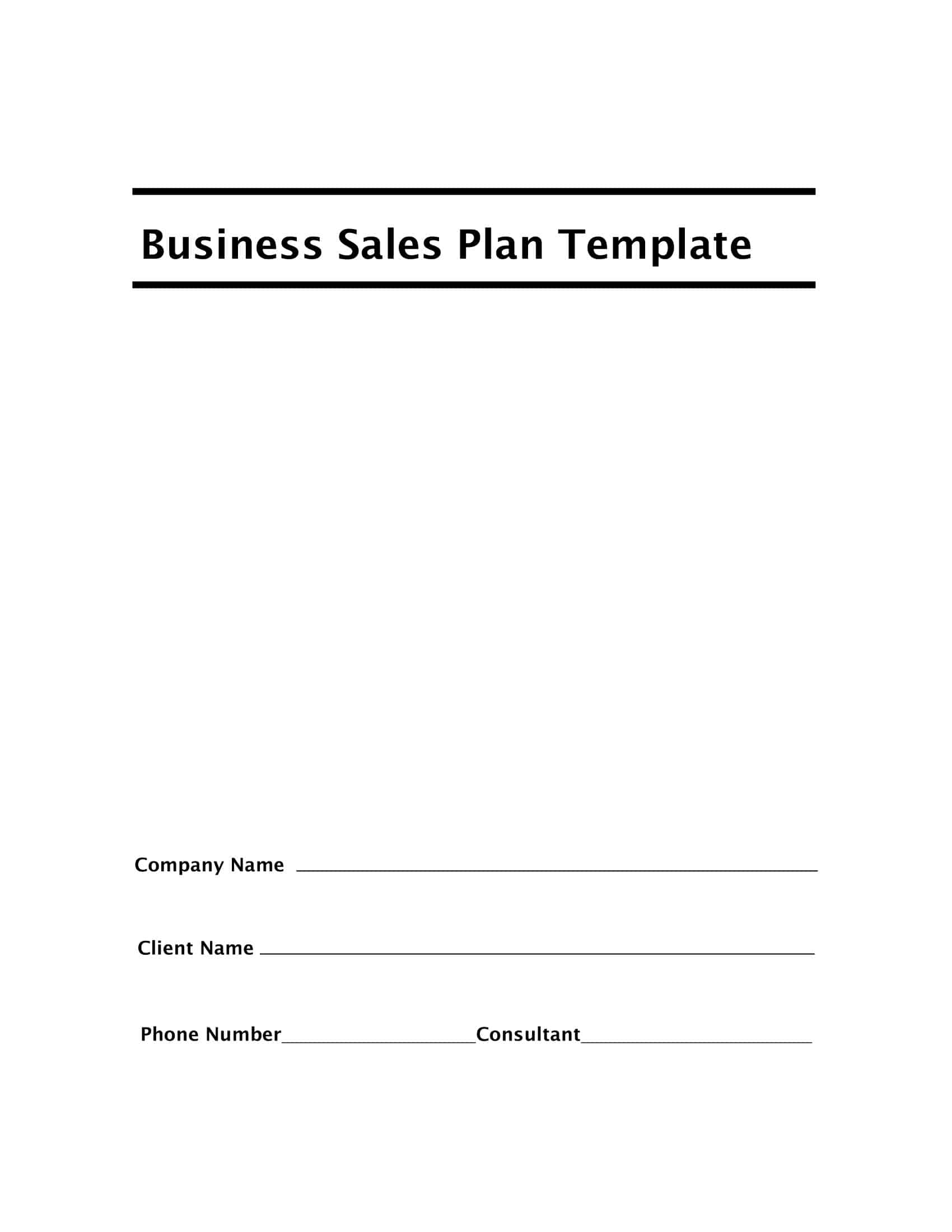















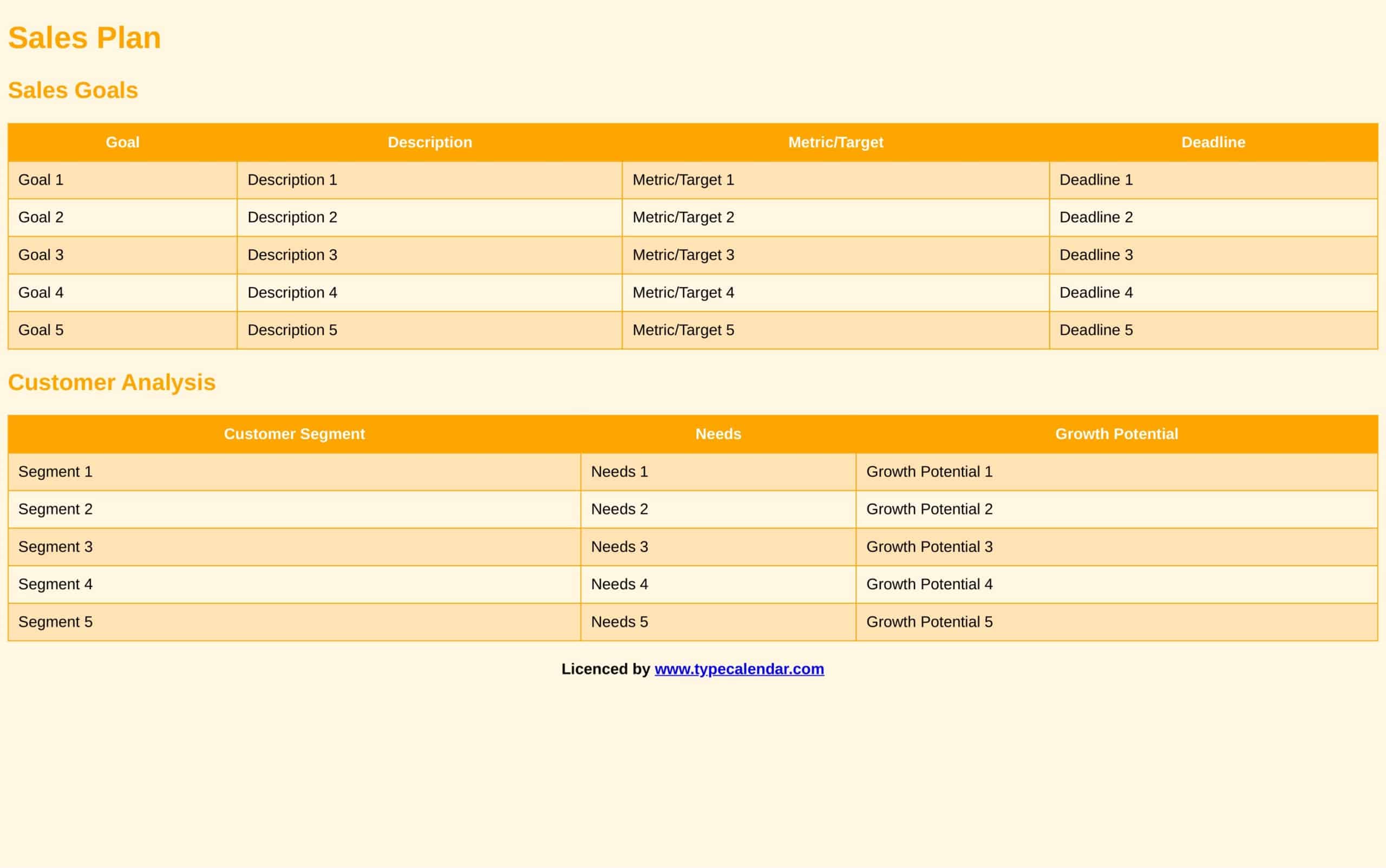
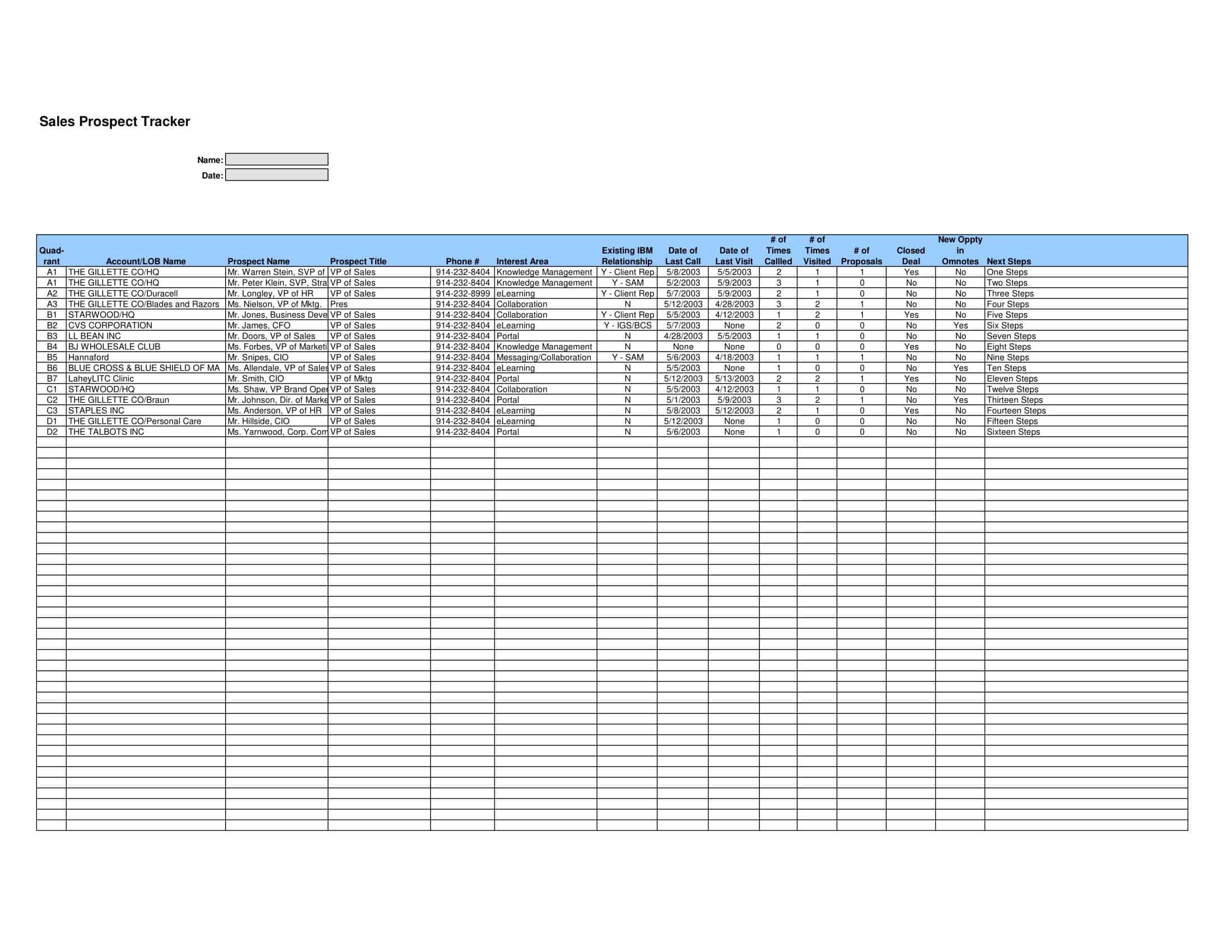



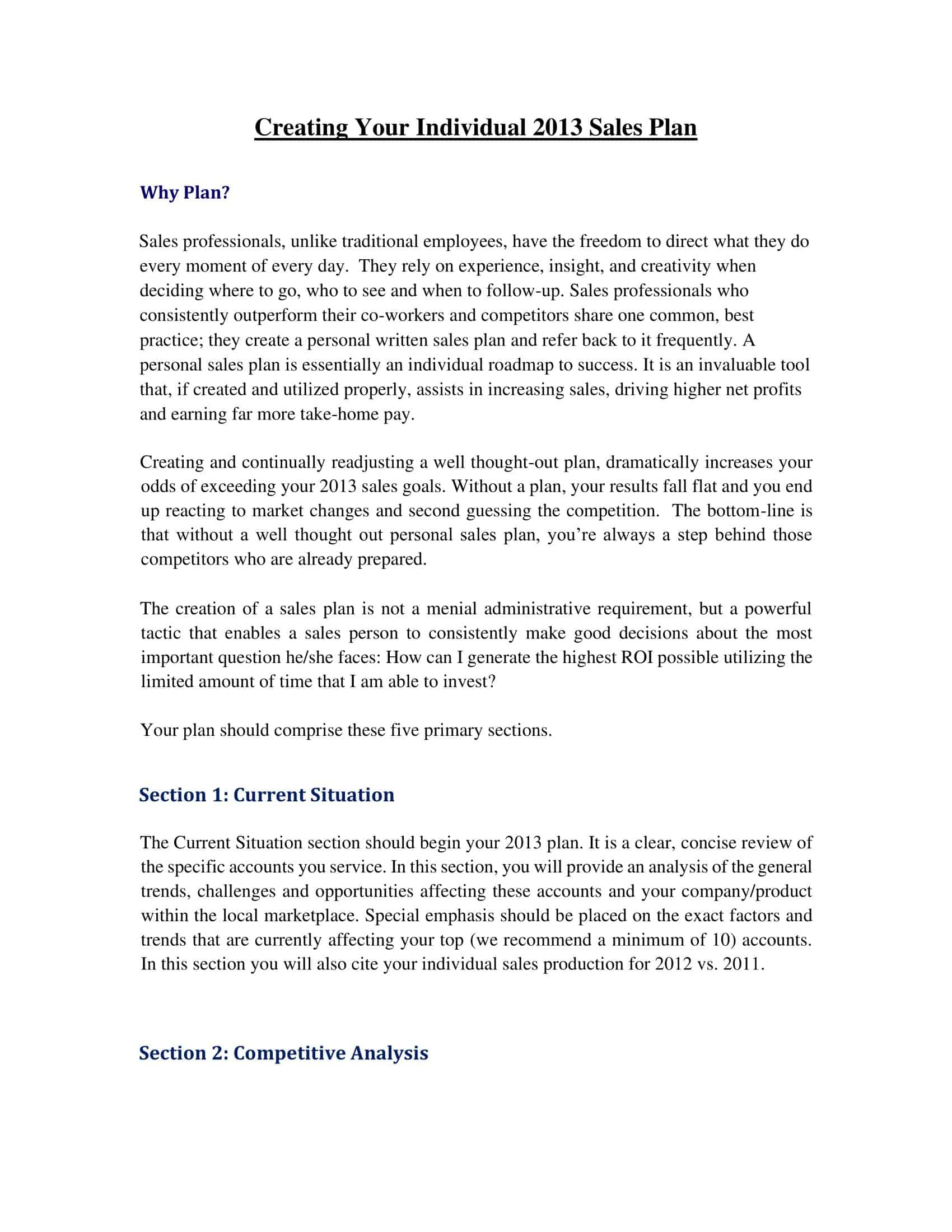





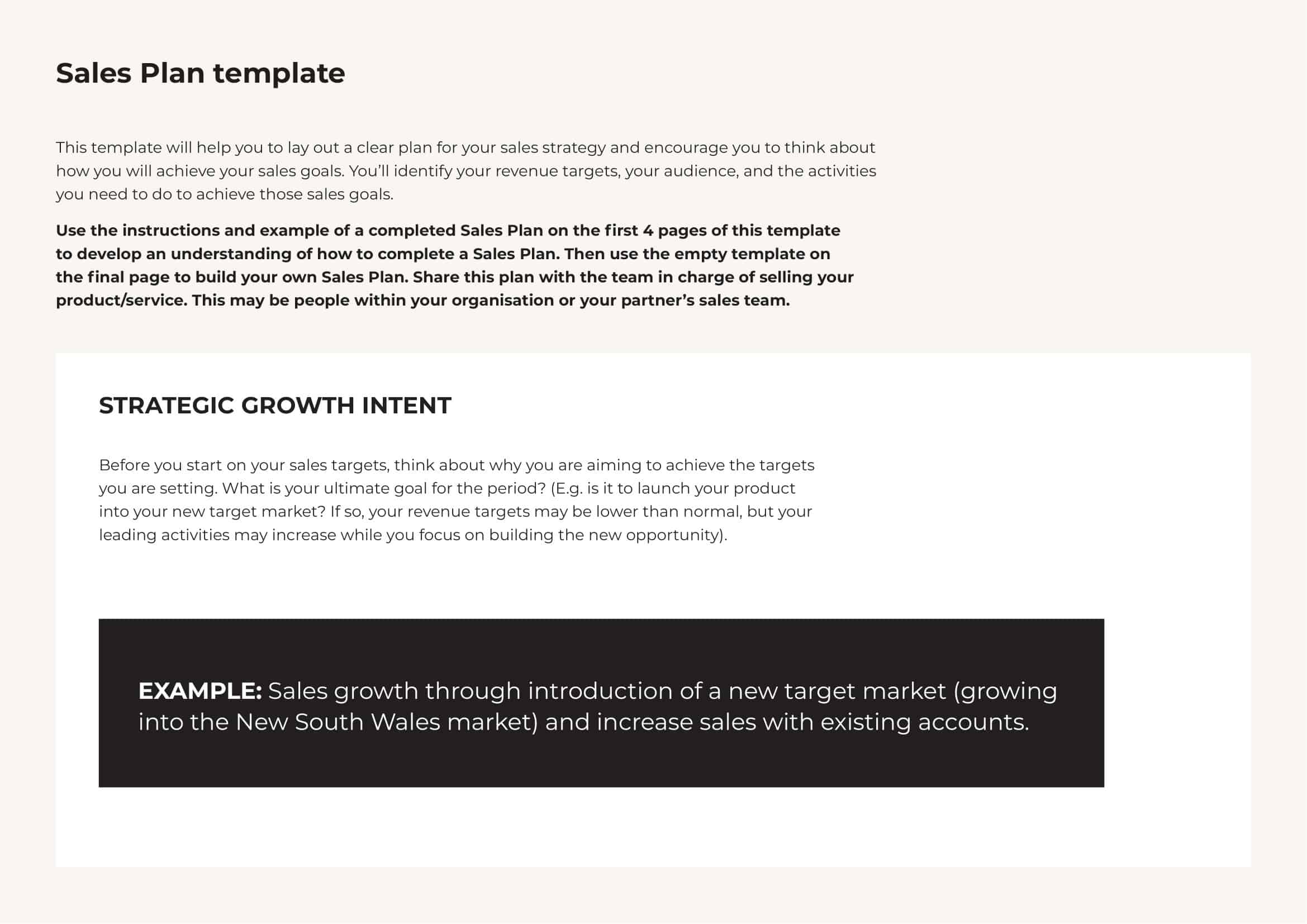









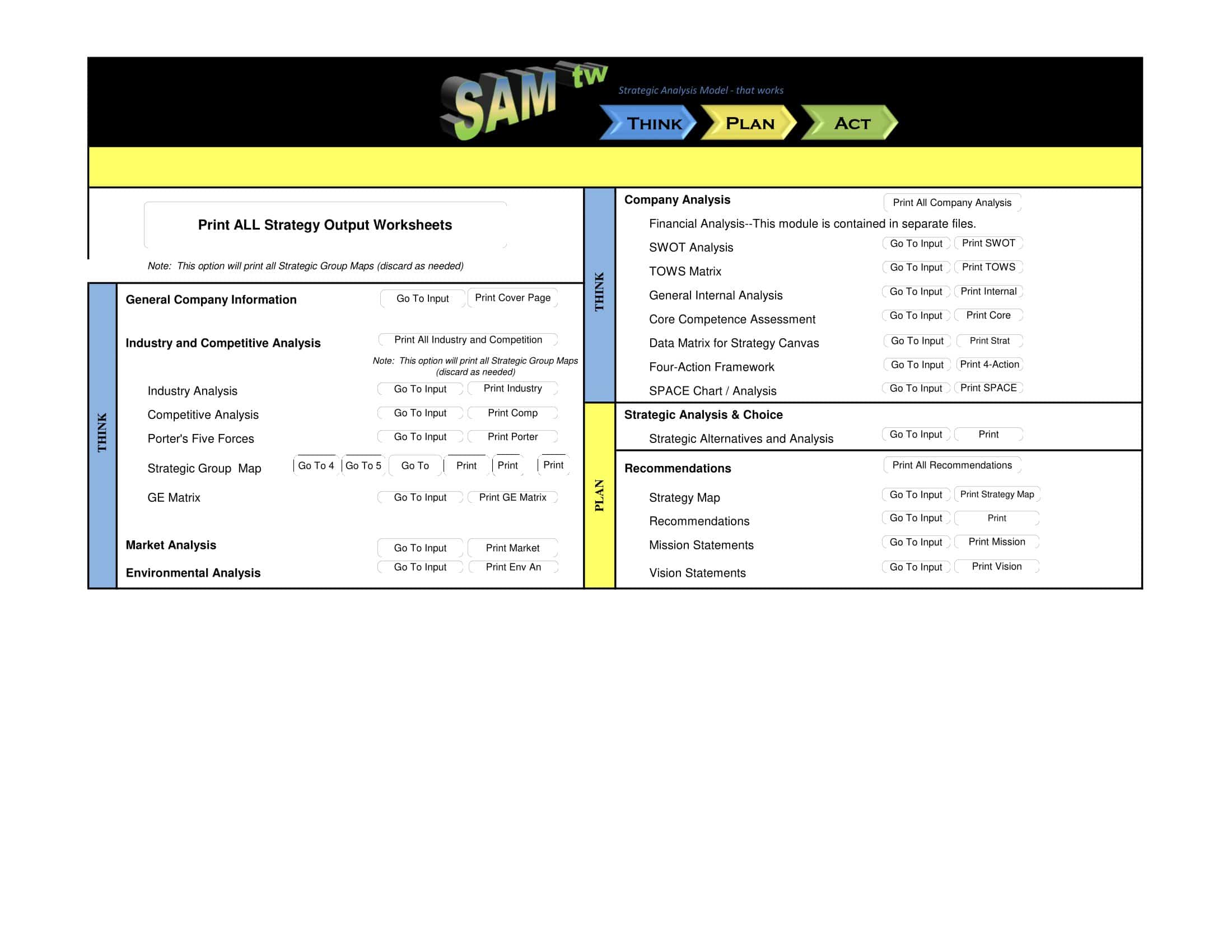
![%100 Free Hoodie Templates [Printable] +PDF 1 Hoodie Template](https://www.typecalendar.com/wp-content/uploads/2023/05/Hoodie-Template-1-150x150.jpg)
![Free Printable Parenting Plan Templates [PDF, Excel] 2 Parenting Plan](https://www.typecalendar.com/wp-content/uploads/2023/05/Parenting-Plan-1-150x150.jpg)
![Free Printable Financial Plan Templates [Excel, PDF, Word] Business Plan 3 Financial Plan](https://www.typecalendar.com/wp-content/uploads/2023/05/Financial-Plan-150x150.jpg)
